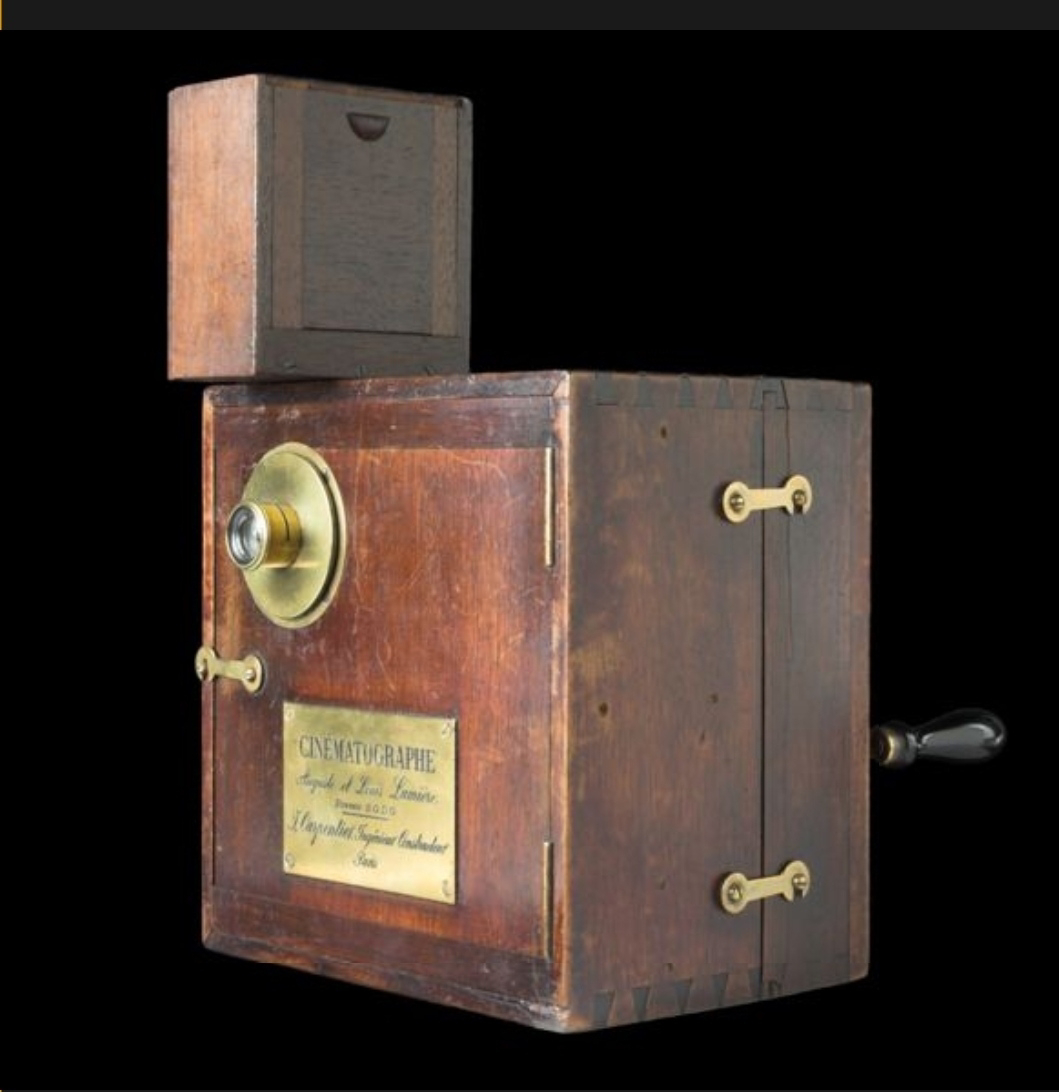Cinematography is the illusion of movement by the recording and subsequent rapid projection of many still photographic pictures on a screen. Originally a product of 19th-century scientific endeavour, cinema has become a medium of mass entertainment and communication, and today it is a multi-billion-pound industry.
WHO INVENTED CINEMA?
Publicity image of Edison Kinetophone, c.1895. No one person invented cinema. However, in 1891 the Edison Company successfully demonstrated a prototype of the Kinetoscope, which enabled one person at a time to view moving pictures.
The first public Kinetoscope demonstration took place in 1893. By 1894 the Kinetoscope was a commercial success, with public parlours established around the world.
35mm Lumiere Cinematographe camera/printer/projector, serial number 254, with brass taking and projection lenses with Lumiere Thread, crank handle. claw machanism designed for Edison perforations.
Lumière Cinématographe, made by August and Louis Lumière, and Jules Carpentier, France, c. 1895.
and projector designed by brothers
Auguste and Louis Lumière. It was first demonstrated at a scientific meeting in March 1895. The Cinématographe was used to present the first cinema show to a paying audience on 28 December 1895 at the Grand Café on the Boulevard des Capucines in Paris.
CINEMA’S GOLDEN AGE
By the early 1930s, nearly all feature-length movies were presented with synchronised sound and. by the mind - 1930s, some were in full colour too. The advent of sound secured the dominant role of the American industry and gave rise to the so-called ‘Golden Age of Hollywood
During the 1930s and 1940s, cinema was the principal form of popular entertainment, with people often attending cinemas twice a week. Ornate ’super’ cinemas or ‘picture palaces’, offering extra facilities such as cafés and ballrooms, came to towns and cities; many of them could hold over 3,000 people in a single auditorium.
In Britain, the highest attendances occurred in 1946, with over 31 million visits to the cinema each week.
HOW DID CINEMA COMPETE WITH TELEVISION
America prompted a number of technical experiments designed to maintain public interest in cinema.
In 1952, the Cinerama process, using three projectors and a wide, deeply curved screen together with multi-track surround sound, was premiered. It had a very large aspect ratio of 2.59:1, giving audiences a greater sense of immersion, and proved extremely popular.
However, Cinerama was technically complex and therefore expensive to produce and show. Widescreen cinema was not ntion of CinemaScope in 1953 and Todd‑AO inwidely adopted by the industry until the inve 1955. Both processes used single projectors in their presentation.
who is the first daracter
Georges Melies built one of the first film studios in May 1897.It had a glass roof and three glass walls constructed after the model of large studios for still photography, and it was fitted with thin cotton cloths that could be stretched below the roof to diffuse the direct rays of the sun on sunny days.












Good
ReplyDelete